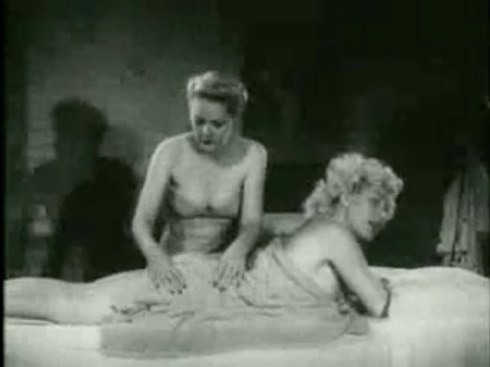An underrated episode of Boris Karloff’s Thriller in brief! even for me, that is…
The Storm -Release date Jan. 22nd, 1962
Directed by Herschel Daugherty adapted for television by writer William D. Gordon from a short story by crime novelist MacIntoch Malmar. Which was later adapted for television, again directed by Hershel Daugherty in an updated film called The Victim 1972Â starring the wonderful Elizabeth Montgomery and the always acerbic Eileen Heckart.
Starring Nancy Kelly as Janet Willsom (The Bad Seed 1956) The classic American horror-thriller film directed by Mervyn LeRoy won Kelly an Oscar for Best Actress that year as psychotic Rhoda Penmark’s (Patty McCormack) mother, Christine Penmark.
Walter Kerr of the New York Herald Tribune wrote of her "Tony Award-winning stage performance:
“Though Miss Kelly has done attractive work on Broadway before, she has never really prepared us for the brilliance of the present portrait” (Walter Kerr-New York Times, January 14, 1995).
The Bad Seed 1956 also stars Eileen Heckart and the quintessentially cranky Henry Jones)
The evil Rhoda strokes her mother. Scarier than clowns….!
The Storm also stars James Griffith as Ed Brandies the quirky lecherous and intrusive cab driver. David McLean as Ben T. Willsom and Jean Carroll as the voice of phone operator Drucie. Not to be forgotten, the beautifully sleek and ever-present Baba the black cat and real star of this episode…
Nancy Kelly plays Janet Willsom, a woman besieged by noises and bad weather, while isolated in her home, waiting for her husband Ben to arrive home in during a raging storm. Kept alerted and accompanied by her faithful black cat Baba, Janet must first fend off the nauseating advances of the cabbie who brings her home and wants to practically move in on her, while her husband is away on business.
When I originally posted this feature I had made a reference to Hitchcock in the post concerning the body of the dead girl in the trunk. The focus is on her lifeless finger, with the large diamond ring dangling as limp as a soggy carrot.
The Storm, in general, contains striking elements of a good old-fashioned Hitchcock thriller! As well as the framing of one hell of a good stage play!
I hadn’t been asked to join in the BEST HITCHCOCK MOVIE (THAT HITCHCOCK NEVER MADE)Â yet. So here it is once again, with a few little tidbits thrown in so that it can take its place in the wonderful blogathon that’s going on between July 7 -July 13!

The use of a strong woman, alone in a situation where there is a person unknown stalking her. Plenty of red herrings thrown in to divert our attention, and one hell of a dead body stuffed in a trunk, that we the audience are privy to, but not the feature’s protagonist, Janet Willsom.
Janet Willsom, finds herself in the midst of one single night’s journey of survival, trying to stay one step ahead of a murderer and also delay an uncomfortable bit of evidence, that could turn her entire world upside down.
From its small taut moments of built-in suspense, until the eventual climax, ‘The Storm’ plays out truly like any good Hitchcock ‘Woman in Peril’ such as Dial M For Murder 1954 Starring Grace Kelly and Ray Milland.

 Suspicion 1941
The episode opens with a mysterious pair of man’s trousers assailing a beautiful blonde in the midst of the rainstorm. She is strangled and stuffed in a trunk in the cellar, as we are strategically shown the emphasis on a shiny diamond ring on her lifeless finger sticking out of the trunk. A very Hitchockian moment…
Is Janet now being stalked by the same mad killer? What’s behind every noise and flash of light and sweep of shadow?
I love this episode because it creates a perfectly creepy environment of isolation. Very much lit as a faithful crime drama Film Noir, the shear simplicity of each moment, each little task Janet undergoes to create normalcy and safety in her surroundings, what would usually be merely ordinary banal gestures become tautly drawn-out maneuvers in a darkly ominous, tweaked and dangerous landscape.
Invoking more of a sense of terror because of its bared-down realism, than a manufactured horror. As suggested by David Schow‘s wonderful commentary of this episode on the recently released DVD box set, the atmosphere of the isolated ‘woman in peril‘ who must fend off whatever is lurking, reminds us of Audrey Hepburn in Wait Until Dark 1967
This is also a faithful psychological Film Noir piece, utilizing the very best in Nancy Kelly as the dame in danger and James Griffith as the lasciviously intrusive cab driver Ed whose quirky character is either a raving maniac or just a red herring to throw us off the scent of the true murderer.
Continue reading “As sure as my name is MonsterGirl, this is a Boris Karloff Thriller! “The Storm””





































































































































